I adore flowers of all kinds, but I must confess that my favorite types look as if they belong to a cottage garden, which probably explains why I am wild about penstemons.
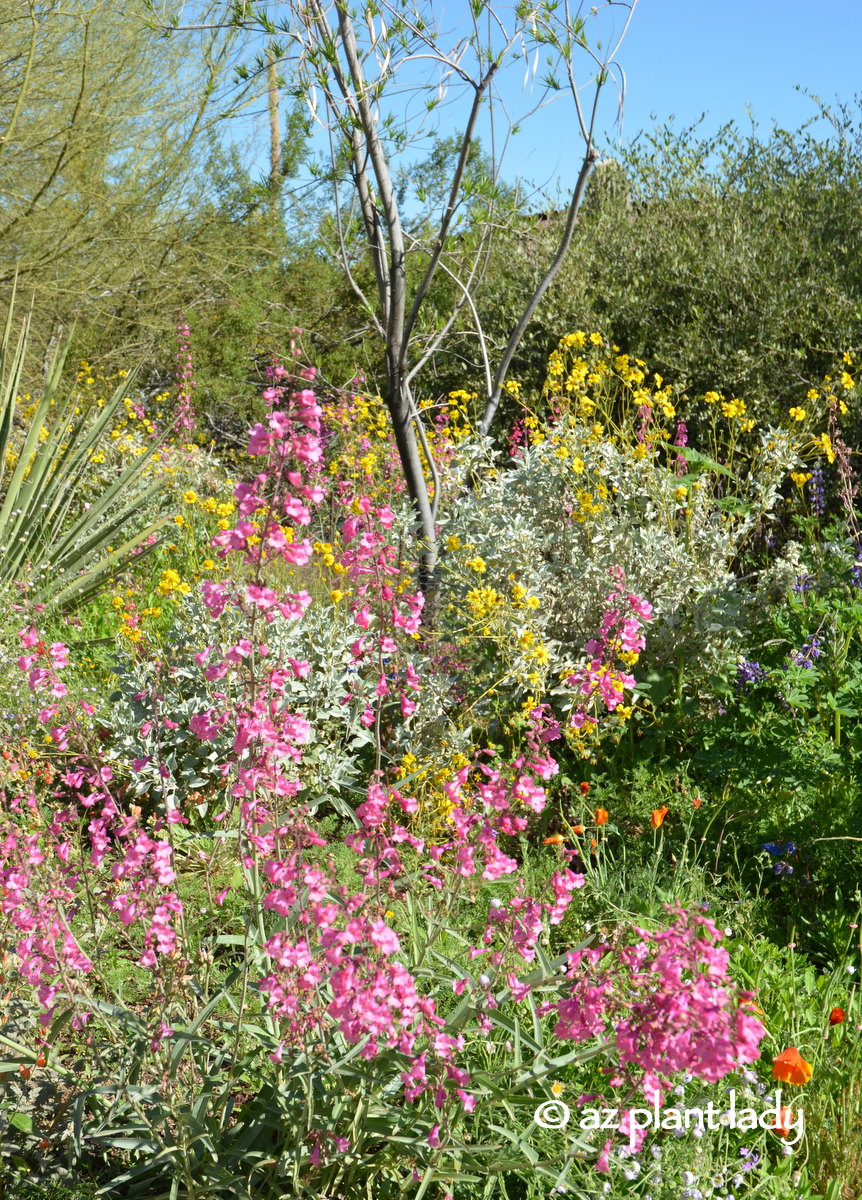
Photo: The pink flowers of Parry’s penstemon (Penstemon parryi) adds welcome color to a spring garden.
I adore flowers of all kinds, but I must confess that my favorite types look as if they belong to a cottage garden, which probably explains why I am wild about penstemons.
There are many different species of penstemon with varying colors, ranging from shades of pink to red with some white ones thrown in.
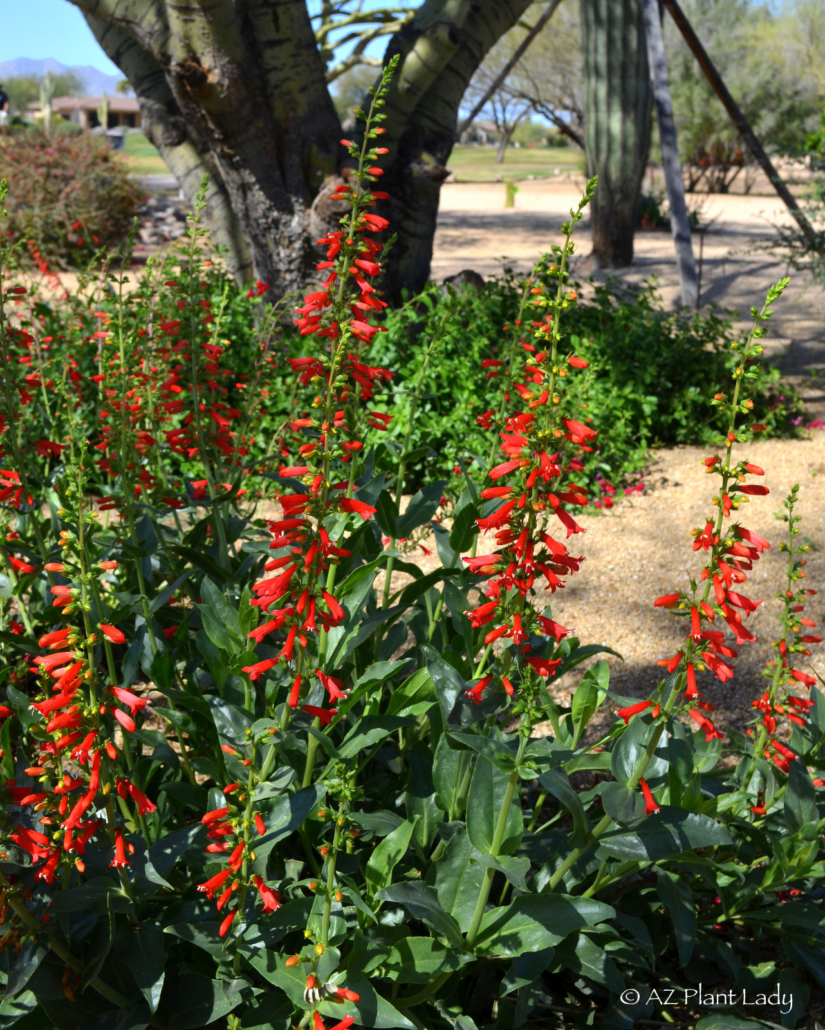
Photo: Firecracker penstemon (Penstemon eatonii) adds vibrant color to a hummingbird demonstration garden.
All penstemons are native to the western half of North America where they thrive in well-drained soil. Most grow in higher elevations, and all are drought-tolerant. For those of you who love to grow native plants that are low-maintenance, penstemons are a must-have.
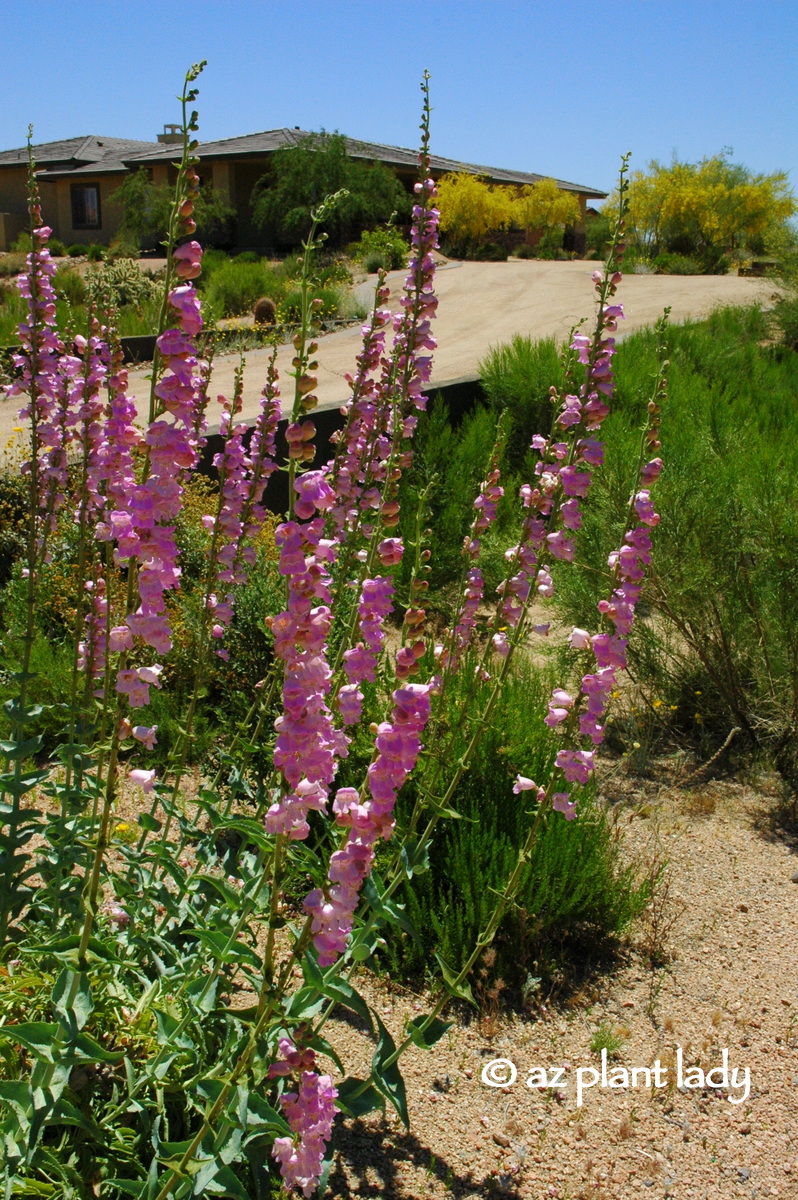
Photo: The 4 – 6 foot flowering spikes of Palmer’s penstemon (Penstemon palmeri) lightly perfume the air of this desert landscape.
I like plants that add a touch of drama to my garden and penstemon do a great job at that when they send up their flowering spikes that tower over their lower cluster of leaves. Bees and hummingbirds love their flowers and it is fun to watch their antics as they sneak inside the flowers for nectar.
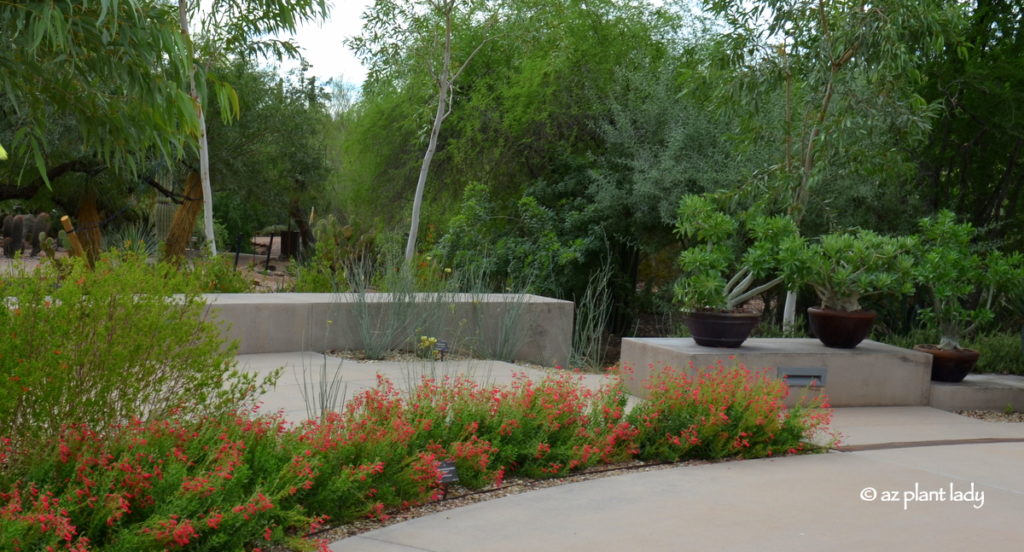
Photo: A row of rock penstemon (Penstemon baccharifolius) adds lovely color to this area at the Desert Botanical Garden in Phoenix.
While penstemon may look rather delicate, it is anything but as it can survive temperatures over 100 degrees and temperatures that dip anywhere from 15 degrees Fahrenheit all the way down to -30 degrees, depending on the species.
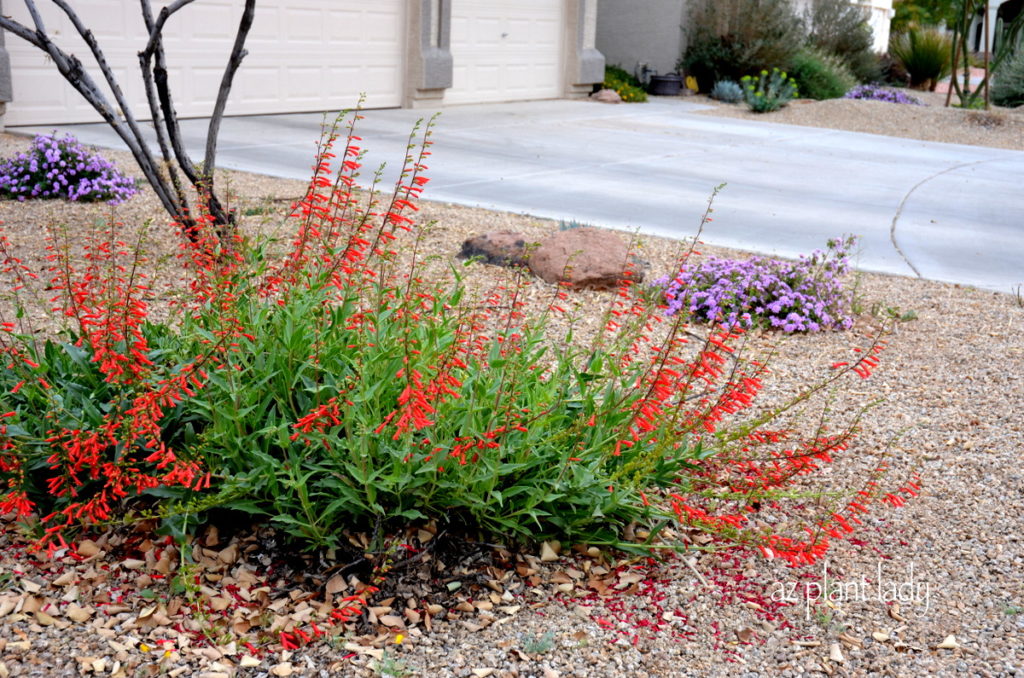
The bloom time for penstemon depends on the species as well as the climate they grow in. For desert dwellers like me, most bloom in late winter into spring. Each year, I eagerly await the appearance of the first unfolding flowering spikes of my firecracker penstemon (Penstemon eatoni) to emerge in January.
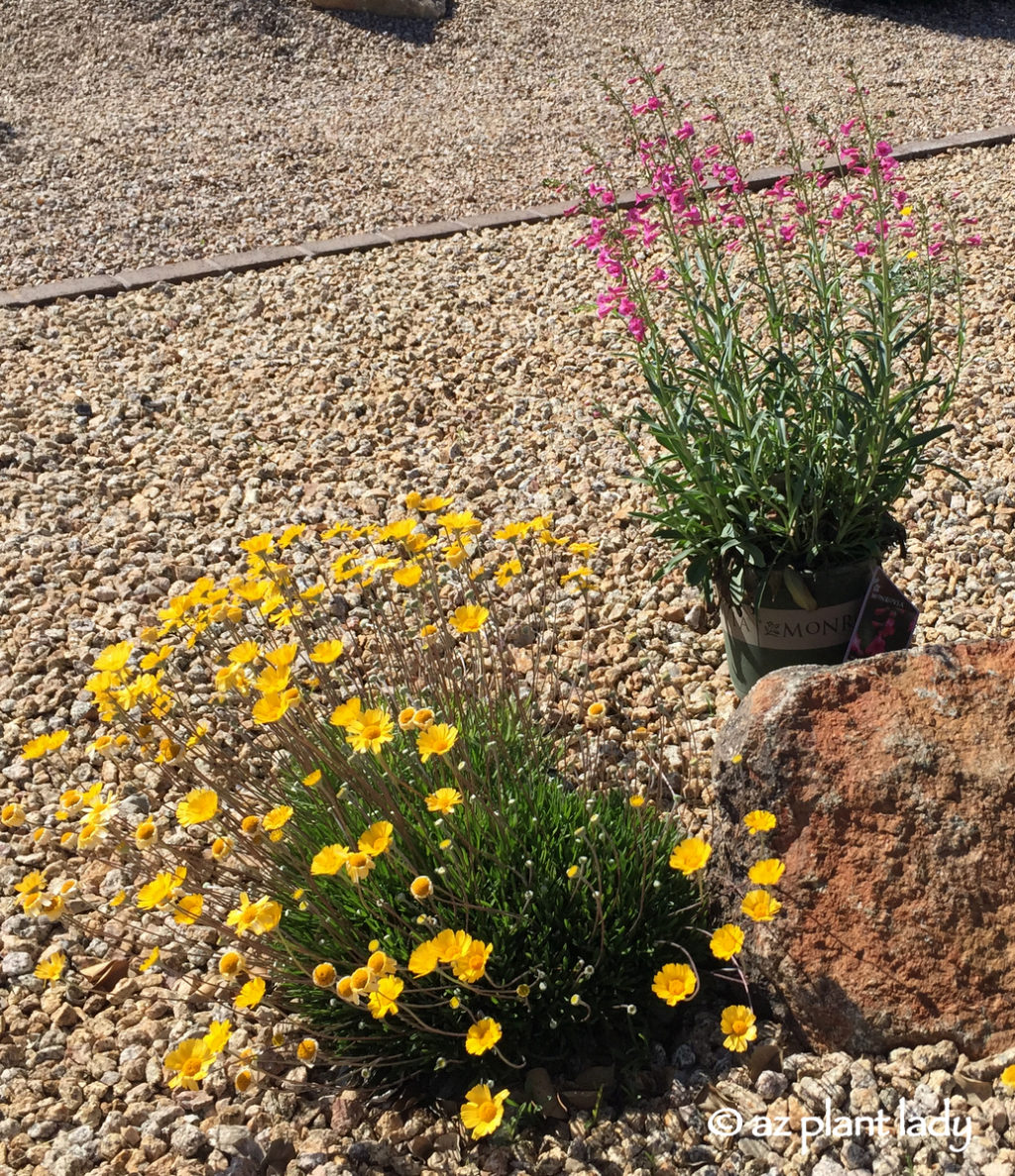
In my garden, Parry’s penstemon (Penstemon parryi) is another favorite of mine in the garden, and its flowers begin to open in late February. This year, I am growing pineleaf penstemon (Penstemon pinifolius), which is a new one for me and I am curious to see how it will do.
Another penstemon that I am anxious to try is rock penstemon (Penstemon baccharifolius), which blooms spring through fall. Lastly, I have added Palmer’s penstemon (Penstemon palmeri) to my garden. I used to grow it years ago and was happy to incorporate it back into my landscape.
It’s important to note that penstemon grows best when grown in the western half of North America. The season in which they bloom can vary depending on the USDA zone. In my zone 9 garden, I begin to appear in January and last through spring. For those who live in colder climates, penstemon will bloom later in spring or even begin flowering in summer. However, no matter when they bloom, penstemon are sure to add beauty to the landscape with a touch of drama.
**Do you have a favorite penstemon?











